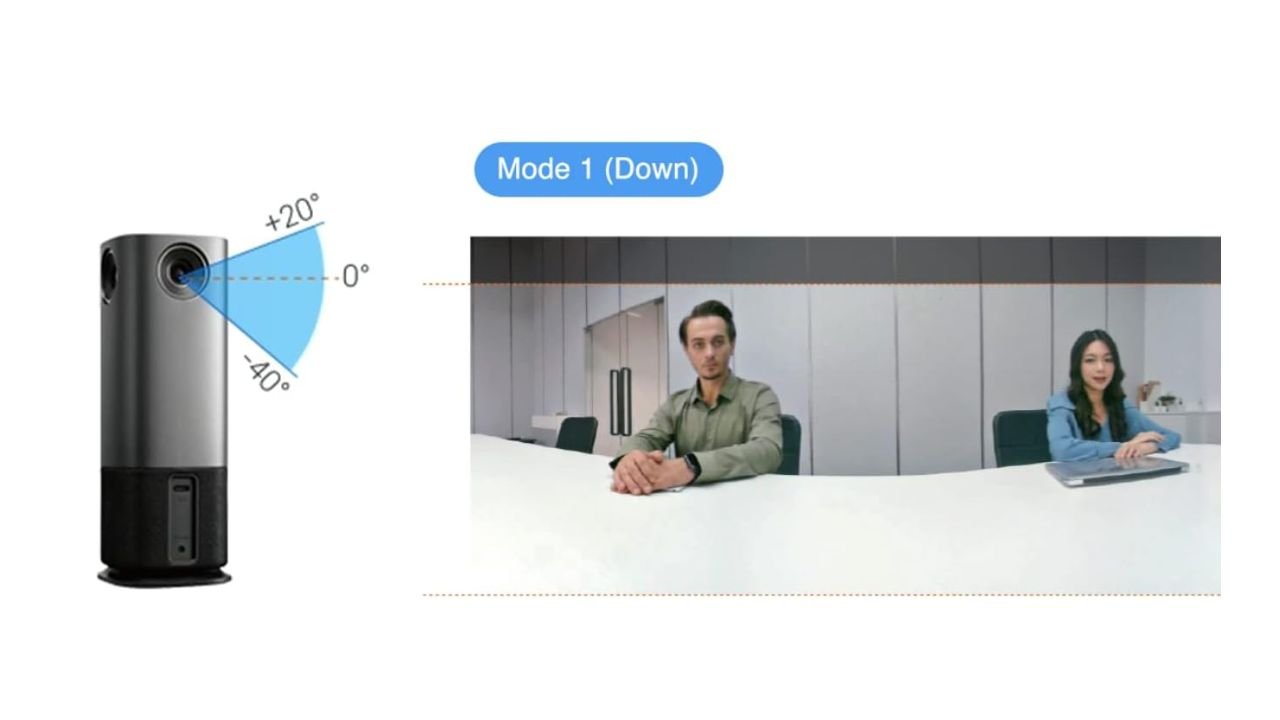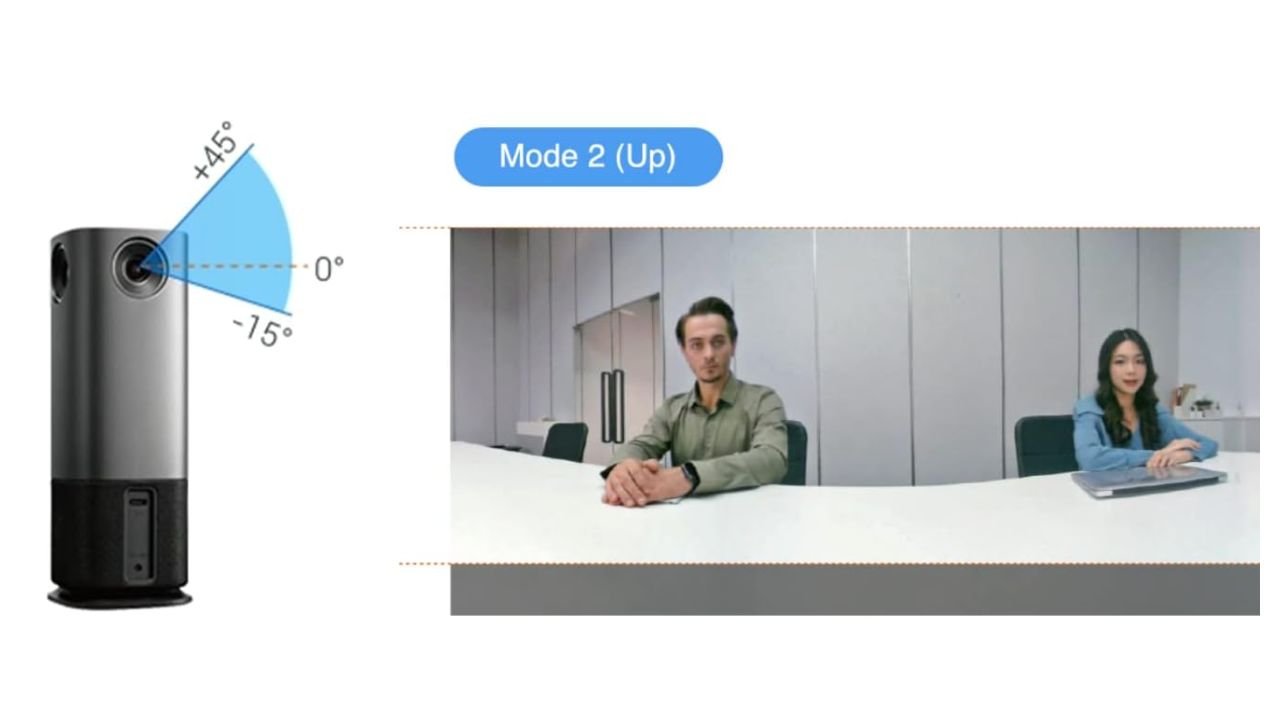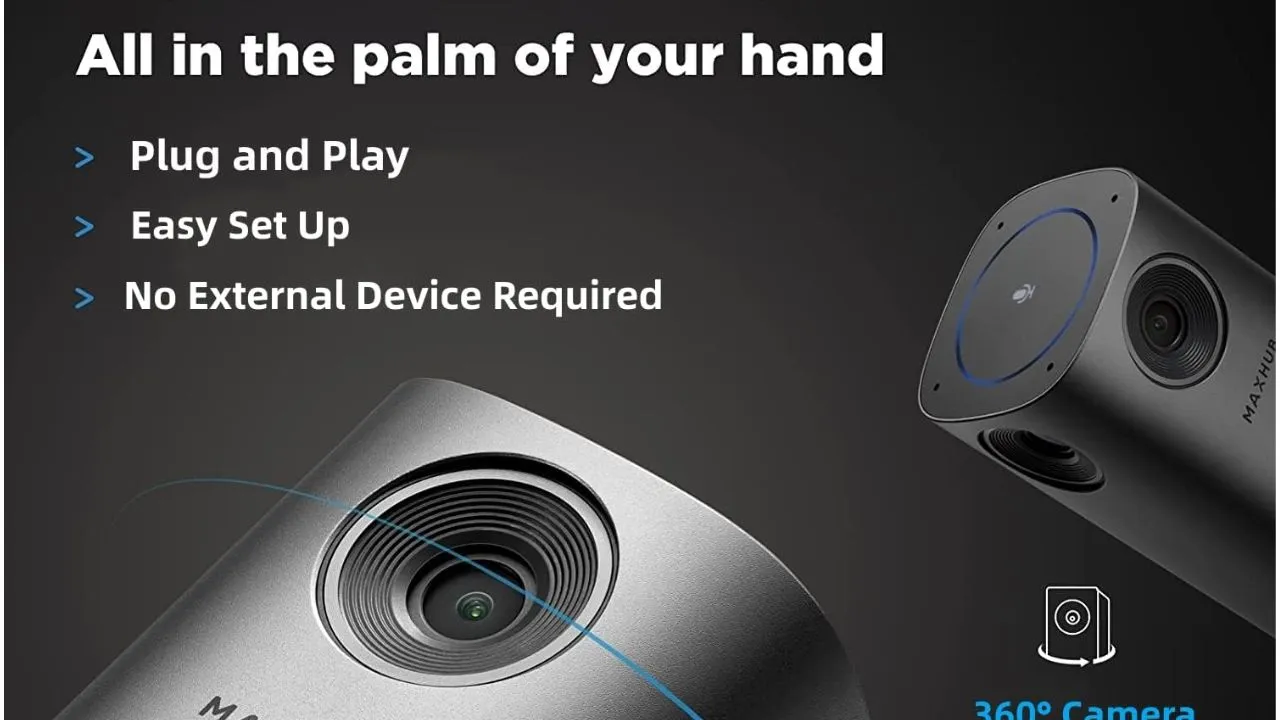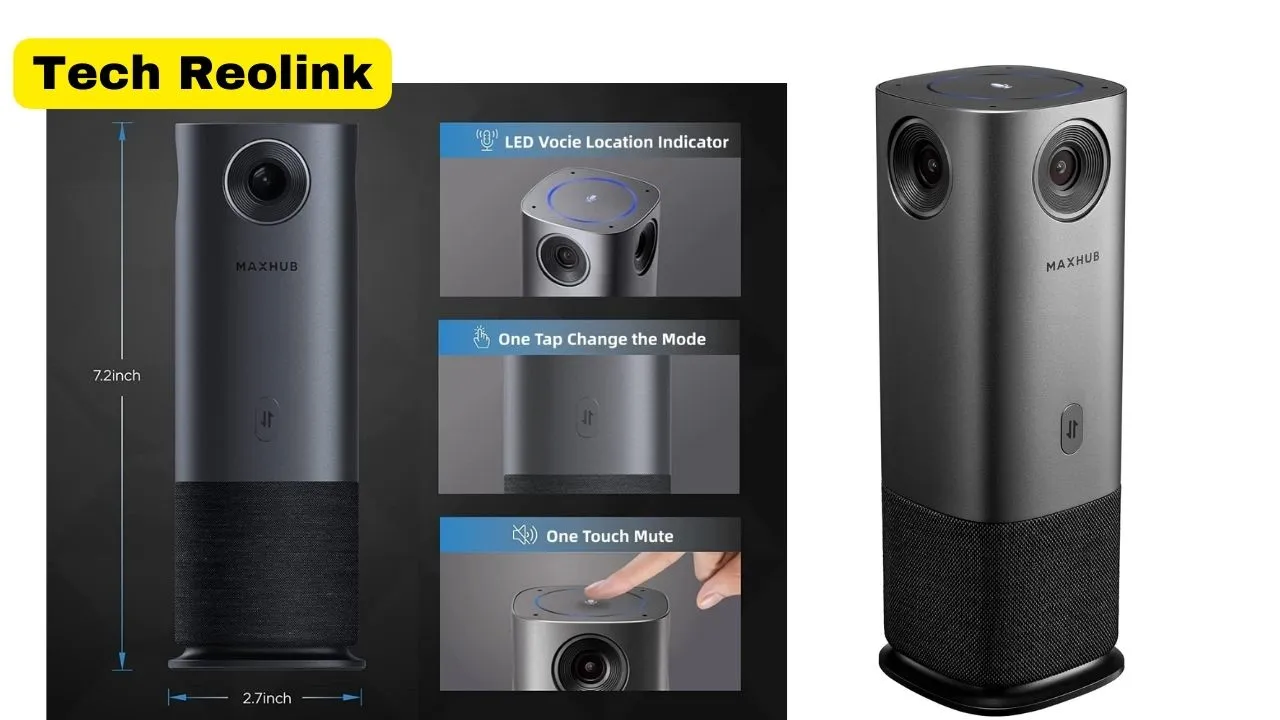360 Security Cameras offer comprehensive surveillance, capturing a full panoramic view to ensure maximum security. These cameras provide a 360-degree field of vision, minimizing blind spots and enhancing monitoring capabilities. Advanced features like motion detection and remote access via mobile apps empower users to keep a vigilant eye on their surroundings.
Ideal for both residential and commercial settings, these cameras are a reliable solution for safeguarding property and ensuring peace of mind. Easy to install and user-friendly, 360 security cameras are valuable in modern security systems, offering enhanced visibility and control.
How 360-degree Security Cameras Work
360-degree security cameras, also known as panoramic cameras or omnidirectional cameras, are specialized surveillance devices designed to provide a comprehensive view of an entire area without any blind spots. These cameras utilize a combination of lenses, sensors, and software algorithms to achieve their panoramic coverage. Here’s how they typically work:
Fisheye Lens Technology: Many 360-degree cameras utilize fisheye lenses, which are specially designed to capture an ultra-wide field of view. These lenses are characterized by their distortion, which allows them to capture a hemisphere or full sphere of view, depending on the lens design. The distorted image is then corrected through software processing to produce a flat, panoramic image.
Hemispherical vs. Full Spherical Coverage: Some 360-degree cameras offer hemispherical coverage, capturing a 180-degree field of view vertically and horizontally. Others provide full spherical coverage, capturing a complete 360-degree field of view in both horizontal and vertical directions. The choice between hemispherical and full spherical coverage depends on the specific surveillance requirements of the environment.
Multi-Sensor Arrays: In addition to multiple lenses, some advanced 360-degree cameras feature multi-sensor arrays. Each sensor captures images from its corresponding lens, and the resulting images are then combined and stitched together to create a panoramic view. Multi-sensor arrays offer improved image quality, particularly in low-light conditions, and can provide redundancy in case one sensor fails.
Edge-Based Processing: To reduce bandwidth and storage requirements, some 360-degree cameras employ edge-based processing. Instead of transmitting the entire panoramic image to a central server for processing, these cameras perform image stitching and processing locally within the camera itself. This minimizes latency and network congestion while still providing high-quality panoramic footage.
360-Degree Video Compression: Transmitting high-resolution 360-degree video footage over networks can be bandwidth-intensive. To address this challenge, 360-degree cameras often use specialized video compression techniques optimized for panoramic video. These compression algorithms leverage the unique characteristics of panoramic imagery to achieve efficient compression ratios without sacrificing image quality.
360-Degree Audio Capture: In addition to visual surveillance, some 360-degree cameras feature built-in microphones or external audio input capabilities for capturing surrounding audio. This enables users to not only see but also hear events occurring within the surveillance area, enhancing situational awareness and providing valuable auditory context to recorded footage.
360-Degree Integration with Analytics: Many modern 360-degree cameras support integration with advanced video analytics software. This software can analyze the panoramic footage in real time to detect and alert users to specific events or anomalies, such as unauthorized intrusions, loitering, or object detection. Integration with analytics enhances the camera’s effectiveness as a proactive security tool.
360-Degree Virtual Reality (VR) Integration: Some 360-degree cameras are designed for integration with virtual reality (VR) platforms, allowing users to immerse themselves in the surveillance environment. This capability is particularly useful for training purposes, allowing security personnel to simulate real-world scenarios and practice response procedures within a virtual 360-degree environment.
Features of 360 Security Cameras
360 security cameras have several features that make them highly effective for surveillance. Here are some critical features explained in simple English:
Wide-Angle View

360 security cameras have a wide-angle view, meaning they can see a larger area than regular cameras. They capture a wide field of view without blind spots, allowing them to monitor a broader space.
Panoramic Coverage
These cameras provide a complete 360-degree view of the surroundings. They can capture an entire area in a single frame, giving you a panoramic view of the scene. This is useful for monitoring large spaces like parking lots, warehouses, or open areas.
Fewer Cameras Needed
With their comprehensive coverage, you can replace multiple regular cameras with just one 360 security camera. This saves costs and simplifies installation, as you don’t need to set up and maintain multiple cameras.
Clear Images
It offers high-resolution images, ensuring that the footage is precise and detailed. This helps identify people or objects in the recorded video, providing necessary visual evidence.
Virtual Zoom
Some 360 security cameras have a virtual zoom feature that allows you to zoom in on specific areas of interest within the wide-angle view. This lets you look at details closer without physically moving the camera.

Easy Integration
These cameras can be easily integrated into existing security systems. You can connect them to your network and access the footage from a computer or mobile device, making monitoring and managing multiple cameras convenient.
Remote Monitoring
It offers remote monitoring capabilities, allowing you to view the video feed anywhere using a computer, smartphone, or tablet. This provides flexibility and convenience, especially if you need to monitor multiple locations or access the footage while on the go.
24/7 Recording
Most 360 security cameras support continuous recording, capturing, and storing video footage around the clock. This ensures that no significant events are missed, providing a constant record of activities for later review and analysis.
How Far Can a 360 Camera See?
A 360 camera can capture a wide-angle view of its surroundings, but the exact distance it can see depends on various factors. Its resolution and lens quality primarily influence the range of a 360 camera. Higher-resolution cameras with better lenses can capture details at greater distances. However, it’s important to note that the main advantage of a 360 camera lies in its ability to provide a comprehensive view rather than zooming in on distant objects.
While it can see a wide area, the ability to focus on specific objects far away may be more limited compared to cameras with dedicated zoom lenses. Additionally, environmental factors such as lighting conditions, weather, and obstacles can affect the visibility of distant objects in the camera’s view. Therefore, the exact range of a 360 camera varies depending on its specifications and the specific conditions of the environment in which it is placed.
Benefits of Using 360 Security Cameras

Cameras provide many benefits that significantly enhance surveillance and ensure comprehensive security measures. The panoramic view offered by these cameras allows for complete space coverage, eliminating blind spots and minimizing the risk of unauthorized access or activities going unnoticed. With their ability to capture an entire 360-degree field of view, these cameras offer unparalleled situational awareness, enabling users to monitor an entire area without needing multiple cameras.
This comprehensive coverage simplifies installation, reduces maintenance costs, and provides a more efficient and effective monitoring system. Furthermore, 360 security cameras have advanced features such as motion detection and analytics, enabling real-time alerts and intelligent video analysis. This empowers security personnel to respond promptly to potential threats or incidents, preventing security breaches and ensuring a proactive approach to security management.
Additionally, the high-resolution footage these cameras capture ensures clear and detailed imagery, facilitating accurate identification of individuals and recording crucial evidence for investigations. The versatility of 360 security cameras extends beyond traditional security applications, finding utility in various industries such as retail, transportation, and public safety.
Read More: Lerro Security Camera With Night Vision: A Simple Guide In 2024
Considerations for Choosing 360 Security Cameras
Choosing the right 360 security camera is crucial for comprehensive surveillance. Consider several factors to make an informed decision.
Field of View:
Evaluate the camera’s field of view. A wider angle ensures more coverage, minimizing blind spots. Look for cameras with at least 180 degrees.
Resolution:
Higher resolution means more explicit images. Opt for cameras with at least 1080p resolution for detailed footage.
Night Vision:
Consider low-light performance. Choose cameras equipped with infrared LEDs for adequate night vision, maintaining security around the clock.
Connectivity:
Check the camera’s connectivity options. Wi-Fi-enabled cameras offer easy installation and remote monitoring, enhancing accessibility.
Storage:
Determine how the camera stores footage. Choose between local storage or cloud-based solutions based on your preferences and needs.
Power Source:
Decide between wired and wireless cameras. Wired cameras offer constant power, while wireless ones provide installation flexibility.
Durability:
Consider the camera’s build quality and weather resistance. Ensure it can withstand outdoor elements for reliable long-term use.
You can select a 360 security camera that best fits your surveillance requirements by weighing these considerations.
Is There a 360 CCTV Camera?
Yes, there are 360 CCTV cameras available in the market. These cameras are designed to provide a complete 360-degree field of view, allowing for comprehensive surveillance coverage without any blind spots. 360 CCTV cameras utilize multiple or fisheye lenses to capture a wide-angle view of the surroundings.
Some 360 CCTV cameras also offer pan-tilt-zoom (PTZ) functionality, allowing users to control the camera’s movement remotely and focus on specific areas of interest. These cameras are commonly used in various settings, such as retail stores, offices, public spaces, and homes, to enhance security and monitoring capabilities.
How to Install 360 Security Cameras?
Installing 360 security cameras doesn’t need to be complicated. Follow these steps for a hassle-free setup:
Choose Location:
Select strategic locations for maximum coverage. Ensure a clear view of the area you want to monitor, minimizing obstructions.
Mounting:
Securely mount the camera using the provided hardware. Choose a stable surface or bracket, and follow the manufacturer’s guidelines for optimal positioning.
Power Connection:
Connect the camera to a power source. For wired cameras, use the provided power cables. Wireless cameras may require battery installation or connection to a power outlet.
Network Setup:
Follow the manufacturer’s instructions to connect to your Wi-Fi network for Wi-Fi-enabled cameras. Ensure a stable and secure connection.
Configuration:
Access the camera’s settings through the provided app or web interface. Configure preferences such as resolution, motion detection, and alerts according to your needs.
Testing:
Perform a test to ensure the camera is functioning correctly. Check the live feed and adjust the angle if necessary.
Monitoring:
Install the relevant monitoring software on your devices. Most cameras come with apps for remote monitoring. Ensure the software is compatible with your smartphone, tablet, or computer.
Security Measures:
Set up password protection and any additional security features provided by the camera. This helps prevent unauthorized access to your surveillance system.
Regular Maintenance:
Keep the camera lens clean from dirt or debris for optimal performance. Check for firmware updates periodically to ensure your camera has the latest security features.
By following these straightforward steps, you can have your 360 security camera up and running, enhancing the security of your space.
Read More: What is a Nomad Security Camera? Full Detail in 2024
Conclusion
In conclusion, 360 security cameras have emerged as indispensable tools in modern surveillance systems, providing a comprehensive 360-degree view for enhanced security. Their wide-angle coverage, panoramic capabilities, and high-resolution imaging make them ideal for residential and commercial settings. These cameras not only minimize blind spots but also reduce costs by replacing multiple traditional cameras.
They offer unparalleled situational awareness with features like remote monitoring, motion detection, and virtual zoom. The benefits extend beyond security, finding applications in various industries. Choosing the right camera involves the field of view, resolution, night vision, connectivity, storage, power source, and durability. Installing a 360 security camera is straightforward, ensuring hassle-free setup and long-term effectiveness in safeguarding spaces.
FAQ’s
How do 360 security cameras work?
360 security cameras utilize multiple or fisheye lenses to capture a wide field of view. The camera combines these individual streams into a single panoramic image or video. Some models also offer the ability to digitally pan, tilt, and zoom within the captured image.
Where are 360 security cameras commonly used?
360 security cameras are commonly used in large open spaces such as parking lots, warehouses, retail stores, airports, and public areas. They are also used in homes to monitor large rooms or outdoor areas comprehensively.
Can 360 security cameras be used outdoors?
Yes, many 360 security cameras are designed for outdoor use. They are built to withstand harsh weather conditions and often come with weatherproof or vandal-resistant enclosures.
How do I view the footage recorded by a 360 security camera?
The footage and 360 security camera records can be viewed through various methods. Some cameras have dedicated software or mobile apps that allow you to access the live feed or recorded footage. Others may integrate with a video management system or network video recorder for centralized monitoring and storage.
Can I integrate 360 security cameras with other security systems?
Yes, 360 security cameras can often be integrated with other security systems, such as access control systems, alarm systems, and video management platforms. This allows for a comprehensive security solution that combines multiple layers of protection.
Are 360 security cameras equipped with night vision?
360 security cameras have built-in infrared (IR) LEDs or low-light sensors for night vision. This allows the cameras to capture clear images even in low-light or complete darkness.
